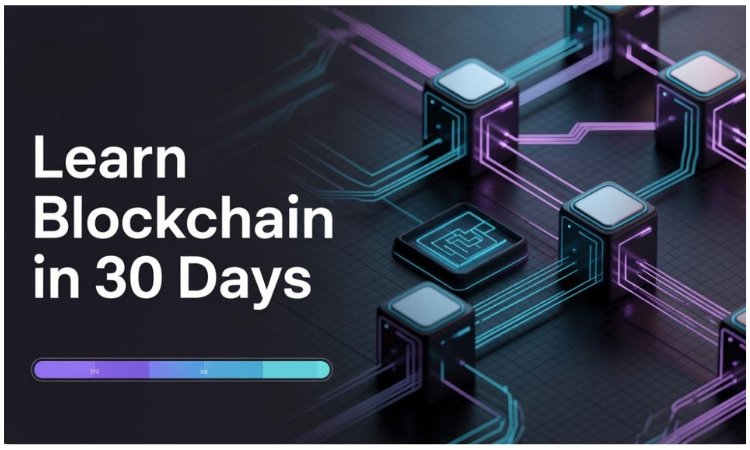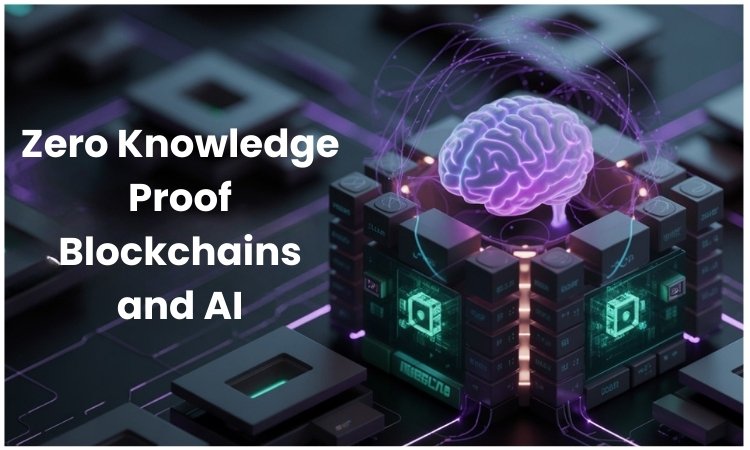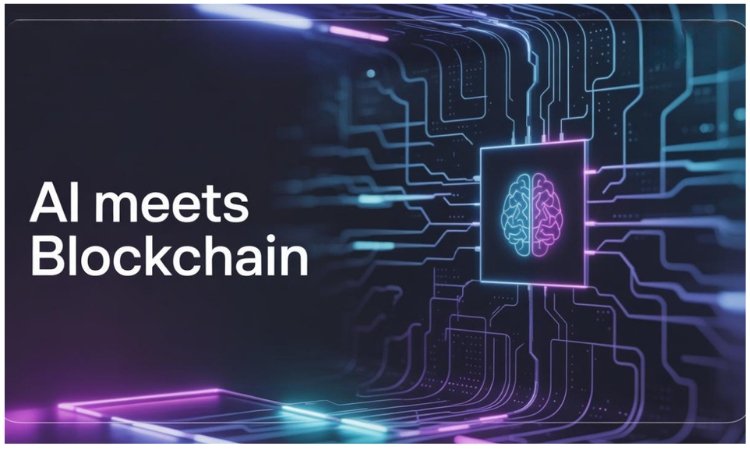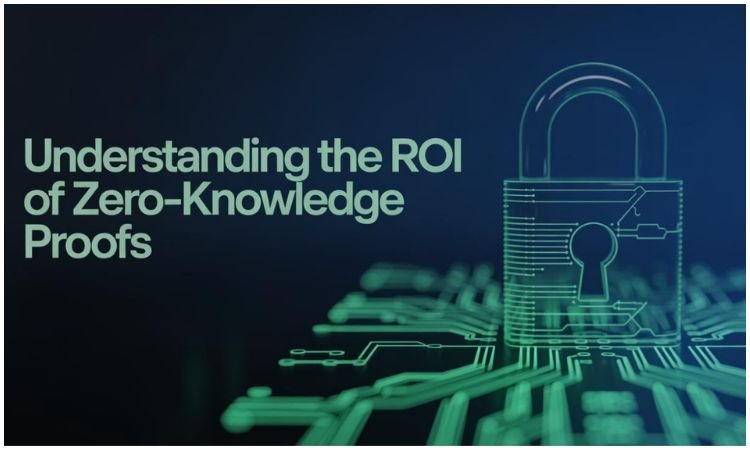
Imagine a diary that’s not just shared with thousands of people, but also locked with a unique code on every page. Once something is written, then it can’t be erased, or even changed and everyone has a secure copy in order to verify what’s true. That’s how blockchain works. It’s like a digital record book that’s safe from tampering, hacks, or even hidden editing.
This actually makes it more perfect for storing important information like payment, contracts, along with ownership records. From banks to healthcare to everyday apps, blockchain is completely changing how data is now protected and trusted. In this guide, you’ll learn how to learn blockchain in 30 days, step by step.
Also Read: Corporate Blockchain Trainer
Pre-Study Foundation: Read This Before You Start
Before even jumping into your 30-day blockchain journey, it’s really important to understand a few basics. This section will help you get familiar with key terms, tools, and the right approach so that you can make the most of your learning.
What is Blockchain and Why Is It Important in 2025?
Blockchain is a digital system for recording information in a way that is secure, transparent, and cannot be changed. Traditional databases are actually controlled by a single authority, while blockchain stores data across a network of computers, where each entry (or “block”) is linked to the one before it and forms a secure chain.
When it comes to 2025, blockchain is actually more than just the tech behind cryptocurrencies. Over and above that, it;s being used to streamline finance, track goods in supply chains, secure medical records, and verifying digital identities. As businesses push for more transparency and data security, the demand for blockchain skills actually continues to grow rapidly.
How to Approach This 30-Day Plan?
- Stay Consistent, Not Intense: Aim for 60-90 minutes a day, steady daily effort is more effective than occasional long sessions.
- Follow the Learn, Apply, Build Method: Understand the concept, then try a small task, and finally apply it in a real-world project.
- Use Simple Tools to Track Progress: Keep a Notion page, journal, or checklist in order to track what you’ve learned and built each day.
- Stick to the Daily Flow: Don’t skip ahead. Each day rebuilds on the last, so follow the plan step by step.
Must-Have Tools & Accounts
- Google Chrome + MetaMask Extension
Use Chrome with MetaMask in order to interact with blockchain apps and test smart contracts. - GitHub Account
Store your code, track projects, and showcase your blockchain work to others. - Remix IDE
A browser-based Solidify editor to write, test, and deploy smart contracts easily, - Optional but Useful
- VS Code: A powerful code editor for larger projects.
- Node.js: Required for advanced DApp development.
Day-by-Day Learning Plan (Week-Wise)
| Week | Days | Topics Covered | Hands-On Activity / Tools |
|---|---|---|---|
| Week 1 | Day 1–6 | - Blockchain basics: blocks, ledgers, decentralization - Miners & nodes - Transaction flow - Consensus: PoW vs PoS | - Blockchain Demo to visualize block creation and tampering |
| Week 2 | Day 7–13 | - Hashing & digital signatures - Merkle Trees - Public & private keys - Wallet creation & blockchain security | - Tools: CyberChef, BitAddress, test wallet setup |
| Week 3 | Day 14–20 | - Ethereum basics - Gas, EVM, and Solidity - Smart contracts and use cases | - Deploy “Hello Blockchain” contract on Remix IDE + MetaMask |
| Week 4 | Day 21–27 | - DApps and their components - Popular platforms: Ethereum, Polygon, Solana, Hyperledger - Build your first DApp | - Build a Voting App / Token Transfer App using Web3.js or Ethers.js |
Follow this structured plan in order to build your blockchain skills step-by-step. Each week adds
new concepts, tools, along with hands-on practice to help you learn by doing:
Week 1 (Day 1–6): Blockchain Fundamentals
- Understand the Basics
Start with the core concepts, blocks, ledgers, decentralization. These are the building blocks you’ll actually need before diving deeper. - Mining & Transaction Validation
Learn how miners exactly verify transactions, add them to blocks, and keep the network secure and trustless. - How Transactions Are Recorded
Understand the flow, from transaction creation to validation, hashing, and permanent storage on the chain. - Consensus Mechanisms
Understand the difference between Proof of Work and Proof of Stake, these are 2 popular ways blockchain achieve agreement. - Interactive Activity
Use the Blockchain Demo to see how blocks are exactly linked and how tampering is detected in real-time.
By the end of Week 1, you’ll have a solid grasp of how blockchain works under the hood, essential for moving ahead confidently.
Week 2 (Day 7–13): Cryptography, Wallets & Transactions
- Hashing & Digital Signatures
Learn how SHA-256 hash works and digital signatures keep blockchain data secure and tamper-proof. - Merkle Trees Made Simple
Understand how Merkle Trees efficiently verify large sets of transactions without even compromising security. - Public & Private Keys
Dive deeper into the core of blockchain identity, how wallets are generated using cryptographic key pairs. - Create a Wallet (Hands-On)
Use tools like BitAddress in order to generate wallets and understand how they actually work behind the scenes. - Blockchain Security 101
Learn how cryptography makes blockchain resistant to fraud, hacks, along with double-spending. - Tools to Explore
Experiment with Cyber/Chef (for hashing) and test wallet generators in order to see cryptographic principles in action.
By the end of Week 2, you’ll better understand the core security layer of blockchain, how data stays safe and how identities are exactly managed.
Week 3 (Day 14–20): Ethereum, Smart Contracts & Web3 Basics
- What Is Ethereum?
Learn how Ethereum goes beyond Bitcoin by supporting decentralized application (dApps) and programmable contracts. - Gas, EVM & How It All Works
Understand the Ethereum Virtual Machine (EVM), gas fees, and how transactions exactly get executed on the network. - Smart Contract Basics
Explore the structure of a basic smart contract in Solidity, functions, variables, events, along with real-world use cases. - Hands-On Activity
Write and deploy your first “Hello Blockchain” smart contract using Remix IDE and connect with MetaMask.
By the end of this week, you’ll know how Ethereum powers the Web3 world and will have deployed your very first contract on the blockchain.
Week 4 (Day 21–27): DApps, Projects & Platforms
- What Is a DApp (Decentralized Application)?
Understand how DApps differ from traditional apps, they’re built with a smart contract backend and a decentralized front-end. - Key Components of a DApp
Learn how the front-end (HTML/JS), smart contract (Solidity), along with wallet (like MetaMask) work together in order to enable user interaction on the blockchain. - Explore Major Platforms
Get familiar with popular blockchain ecosystems:- Ethereum: most widely used
- Polygon: scalable and cost-effective
- Solana: fast with low fees
- Hyperledger: enterprise-focused
- Hands-On Project
Build a simple DApp such as a Voting App or a Token Transfer App using:- Web3.js or Ethers.js
- Integrated with basic front-end (HTML/CSS + JS)
- Connected to MetaMask for real-time interaction
By the end of this week, you’ll understand how blockchain apps are built, and you’ll have a working prototype of your own decentralized application.
Day 28–29: Learn Through Games + Build Your Own Project
Fun Ways to Learn Coding (Gamified Platforms)
These platforms make blockchain learning more fun and interactive:
- CryptoZombies: Learn Solidity (blockchain programming) by building zombie-themed games. Great for beginners.
- Buildspace: Work on real blockchain projects with the help of an online community.
- ChainShot: Solve hands-on coding puzzles to improve your blockchain skills step by step.
4.2 Build Your Final Project (Capstone)
Pick one simple project to show what you’ve learned:
- Create an NFT: Mint your own NFT on a test blockchain (no real money needed).
- Build a DeFi App: A basic app that lets users swap tokens or lend/borrow crypto.
- Create a DAO Demo: Make a simple app to show how voting and community decisions work.
Don’t forget to:
- Upload your code to GitHub
- Share the link in your portfolio or resume
Day 30: What’s Next After the 30-Day
Explore Career Options in Blockchain
You can aim for jobs like:
Blockchain Developer – Code smart contracts and apps
Blockchain Analyst – Study trends and data
Blockchain Consultant – Guide businesses on how to use blockchain
Smart Contract Auditor – Check code for security and bugs
Build a Resume That Stands Out
Add your capstone project GitHub link
Mention tools you’ve learned (Solidity, MetaMask, Remix, etc.)
Highlight courses or platforms you completed (like CryptoZombies or Buildspace)
Certifications to Boost Your Profile
Free: Alchemy University, Ethereum Foundation Learning Hub
Paid: Coursera Blockchain Courses, Certified Ethereum Developer programs
Start Networking in the Blockchain Space
Join communities on Discord (like LearnWeb3 or Buildspace)
Follow experts and devs on Twitter
Attend hackathons or online events
Contribute to open-source projects on GitHub
Conclusion
Completing this 30-day blockchain journey means you’ve taken a big step toward comprehending one of the most in-demand technologies today. From blockchain basics to building DApps and exploring smart contracts, you’ve covered real-world concepts that actually can shape your tech future. The key now is to keep practicing, exploring advanced tools, and connecting with the Web3 ecosystem.
Ready to grow further?
Explore the best blockchain technology courses to sharpen your skills and build a strong career.






